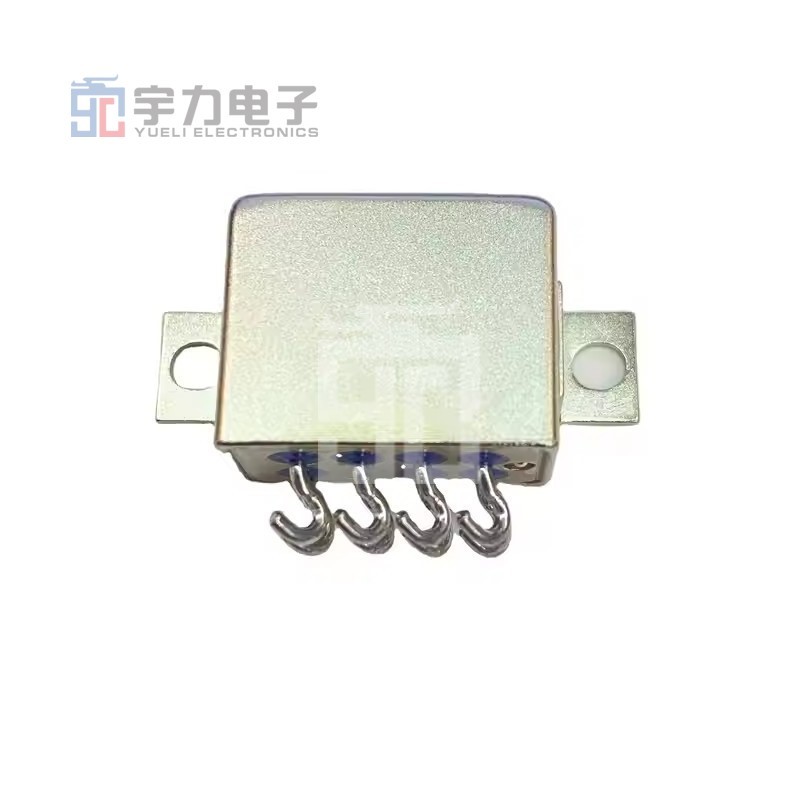Understanding Signal Relays: Essential Components for Electronic Circuits
2025-07-29

Signal relays are vital components in electronic circuits, primarily utilized for controlling the flow of electrical signals. These electromechanical devices act as switches that open or close circuits, effectively allowing or interrupting the transmission of electrical signals. Understanding the characteristics and functionalities of signal relays can significantly enhance your ability to design and troubleshoot complex electronic systems.
One of the primary features of signal relays is their ability to control high-voltage circuits using low-voltage signals. This capability is particularly advantageous in applications where it is crucial to isolate sensitive components from high voltages, thereby protecting them from potential damage. Signal relays accomplish this isolation through the use of electromagnetic coils that operate a set of contacts. When a current flows through the coil, it generates a magnetic field that actuates the relay, causing the contacts to either close or open, depending on the relay's design.
Signal relays come in various configurations to suit different applications. The most common types include single-pole single-throw (SPST), single-pole double-throw (SPDT), and double-pole double-throw (DPDT). Each configuration serves specific purposes in circuit design. For example, SPST relays are often used in simple on/off applications, while SPDT relays can redirect signals between two circuits. Understanding these configurations can help engineers select the appropriate relay for their specific needs.
In addition to their switching capabilities, signal relays are also designed to handle different signal types, including analog and digital signals. This versatility makes them suitable for a wide range of applications, from industrial automation systems to consumer electronics. In particular, signal relays are extensively used in telecommunication systems, automotive electronics, and home automation devices, where reliable signal control is critical.
Furthermore, the performance of signal relays can be influenced by various factors, including coil voltage, switching speed, and contact rating. When selecting a signal relay, it's essential to consider these specifications to ensure optimal performance in your application. For instance, relays with higher contact ratings can manage larger loads, while those with faster switching times may be required for high-speed data transmission.
In summary, signal relays are indispensable components in the realm of electronics. Their ability to control and manipulate electrical signals plays a crucial role in the functionality and reliability of various devices and systems. By understanding the characteristics, types, and applications of signal relays, you can make informed decisions when incorporating these devices into your electronic designs, contributing to the overall efficiency and performance of your projects.
One of the primary features of signal relays is their ability to control high-voltage circuits using low-voltage signals. This capability is particularly advantageous in applications where it is crucial to isolate sensitive components from high voltages, thereby protecting them from potential damage. Signal relays accomplish this isolation through the use of electromagnetic coils that operate a set of contacts. When a current flows through the coil, it generates a magnetic field that actuates the relay, causing the contacts to either close or open, depending on the relay's design.
Signal relays come in various configurations to suit different applications. The most common types include single-pole single-throw (SPST), single-pole double-throw (SPDT), and double-pole double-throw (DPDT). Each configuration serves specific purposes in circuit design. For example, SPST relays are often used in simple on/off applications, while SPDT relays can redirect signals between two circuits. Understanding these configurations can help engineers select the appropriate relay for their specific needs.
In addition to their switching capabilities, signal relays are also designed to handle different signal types, including analog and digital signals. This versatility makes them suitable for a wide range of applications, from industrial automation systems to consumer electronics. In particular, signal relays are extensively used in telecommunication systems, automotive electronics, and home automation devices, where reliable signal control is critical.
Furthermore, the performance of signal relays can be influenced by various factors, including coil voltage, switching speed, and contact rating. When selecting a signal relay, it's essential to consider these specifications to ensure optimal performance in your application. For instance, relays with higher contact ratings can manage larger loads, while those with faster switching times may be required for high-speed data transmission.
In summary, signal relays are indispensable components in the realm of electronics. Their ability to control and manipulate electrical signals plays a crucial role in the functionality and reliability of various devices and systems. By understanding the characteristics, types, and applications of signal relays, you can make informed decisions when incorporating these devices into your electronic designs, contributing to the overall efficiency and performance of your projects.
Previous:


